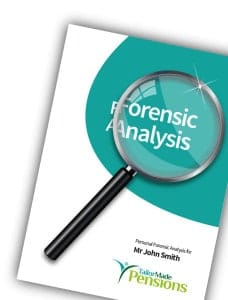The scenario is simple – you are sitting on the tarmac at a UK airport about to fly to some lovely far off destination like South Africa. Gazing out the window you notice that the engine has caught fire. What do you do?
The truth is most people panic and some people freeze.
Either way, if this happens to you, it is not going to be a great outcome and so the trained crew are prepared for this; quickly issuing calming instructions, varying between direct orders, assertiveness, re-assurance and instructions that you know have to be obeyed. Indeed, when you get on a plane, you know that you are not in full control. Whilst your first thought might be the free booze, you always have it in the back of your mind that the crew know what they are doing, and you should follow their instructions.
I should know, as I am an ex-professional pilot and I did the training and passed the tests. I spent almost 10 years clocking up over 2500 flying hours. How many emergencies did I face? Quite a few actually, including loss of engines and a decompression problem over the Pacific in thunderstorms. Almost certain near death in South Georgia islands with severe airframe vibration from a glacier (and the loadmaster Chris flying out the open door at 250 feet and only saved by a small old fashioned harness bouncing him back in). One malfunctioning landing gear light leading to a fuel dump and “careful” landing, and indeed one engine shut down mid-flight. I could go on. Was I trained? Absolutely, that is actually what you spend most of your time training for. All through training both as a learner, and as an instructor myself: “Fly the aircraft”, “fly the aircraft”, “sort the emergency but fly the aircraft”, the mantra came down.
So, back to our scenario. You are a passenger on a plane flying to Africa, but still on the tarmac with an engine fire. What happens?
Option 1 – Your crew call an emergency – they ask for assistance from the local fireman who offer you protection. You are evacuated from the plane, and several hours later after a bit of re-assurance and a re-assessment of your options, you find yourself back on board a different UK flight all safe.
Option 2 – Your crew tell you to strap in – they ask you to sign and waive all your rights, and the aircraft trundles down the runway flying to Africa. On the way, you land in Gibraltar, where you then swap planes. You then continue on your journey with pilots that have no history or experience of your previous problems, and who have never flown in the UK anyway and cannot return there, and have licences with “Safe’R’Us’guaranteed” regulator. Are you stuck?
Risks
So, when comparing Option 1 and 2, I am guessing that most of you would go for scenario 2, yes? Well, I could highlight that this is a little more risky of course. Apart from now being stuck as your pilots cannot return to the UK, this presumes that you have made it to Gibraltar without the fire getting out of control.
And yet, this analogy is exactly the same as (and I hate to bring this story back to reality) UK pensions and ROPS (QROPS). You see, most people, I want to emphasise not all people at this point, freeze or panic when they have a problem with a plane or a pension. The first thing they tend to do is the rational thing and look to obtain advice from someone that they believe they have to trust – the crew with experience; in the pension case, a “local” adviser.
So, what happens?
Pretty much the adviser with a licence from the “Safe’R’Us’guaranteed” regulator recommends option (2) from the plane analogy EVERY SINGLE TIME. Risk, what risk? You are told it is much safer to get out of the UK quickly and do not worry about all those safety measures at the UK airport. Get yourself and your pension down that runway to Gibraltar into a QROPS (or ROPS). Forget the UK as you never have to return there, ever, and neither will your family, ever. This plane is a one way ride and the sooner you can get out of the UK the better.
What happens when the plane / QROPS has further problems. Well you waived all your rights with Option (2), remember? There is no-one who you can turn to and the “Safe’R’Us’guaranteed” regulator turns out to be an insurance policy written in the Cayman Islands with one employee and no funds.
Over the last few months, TailorMade has run a hugely successful series of blogs called 10 reasons to use a QROPS – Facts and myths. It has focused on the selling of QROPS by multiple websites using inaccurate or partial information to “sell a benefit” that may not exist.
This article is an analogy of what is going on with people pensions. You would not consider taking the risk in a plane, and yet people do it all the time with their pensions.
From the 10 reasons to use a QROPS – Facts and myths there have been 3 that have stood out as conversation stoppers, and they are accessible here.
Forensic Review
We offer a forensic review of the 10 reasons to use a QROPS for those that would like to revisit the QROPS and investments they hold. Increased investment performance and lower charges may make a significant difference at retirement.
Some offshore salesmen promoting QROPS as an investment solution live in a parallel universe where they claim to make world stock markets behave differently in QROPS than they do if the same funds are used from and within UK pension funds. Think and behave logically, if promises of bigger returns can only be achieved by moving to a QROPS then why hasn’t the entire investment industry moved offshore? It hasn’t!
The views expressed in this article are not to be construed as personal advice. You should contact a qualified and ideally regulated adviser in order to obtain up to date personal advice with regard to your own personal circumstances. If you do not then you are acting under your own authority and deemed “execution only”. The author does not except any liability for people acting without personalised advice, who base a decision on views expressed in this generic article. Where this article is dated then it is based on legislation as of the date. Legislation changes but articles are rarely updated, although sometimes a new article is written; so, please check for later articles or changes in legislation on official government websites, as this article should not be relied on in isolation.
This article was published on 3rd February 2017
Related Stories:
- Brexit, Expats and Pensions
- QROPS and a Pension Returning to the UK- Part One- the Expat Returns
- RL360 QROPS Investment
- What can I do with my Gibraltar QROPS?
- Gibraltar QROPS- New investment rules
Share this story




